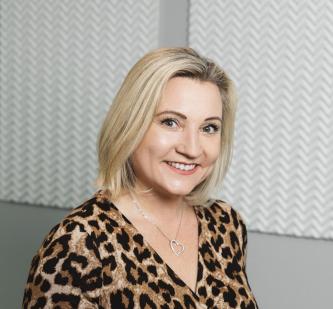
The Neurodiversity Guide to Recruit, Promote & Retain

Our latest Tile Hill session featured a deep discussion focusing on the topic of neurodiversity in the workplace, aiming to help organisations identify what candidates with neurodiversity can achieve and learn to create an environment where it is conducive to neurodiversity.
The session was attended by almost 100 people, signifying the importance and interest in the topic for organisations today.
Vic Williams was the guest speaker at the event. As a speaker, consultant and advocate for dyslexic and ADHD people, he shared tips for HR professionals looking to create a more inclusive environment for neurodiversity, as well as his lived experiences in the workplace as a neurodiverse man.
The session was led by Helen Marshall, the Associate Director of Health at Tile Hill. Motivated by the genuine difference each interim manager makes in the public sector, Helen is passionate about providing a proactive and consultative approach to benefit both candidates and clients. Her role as Associate Director of Health signifies a new chapter, where she aims to apply their extensive knowledge and skills to make a meaningful impact.
Here are some of the memorable points from the talk and Q&A session.
Challenges Faced by Neurodiversity in the Workplace
In 2022, a survey on neurodiversity employment practices in the NHS painted a difficult picture for neurodiverse people. In the hiring stages, 74% of neurodiverse people said they don’t even finish job applications because they felt like it excluded them. Furthermore, 53% once hired after multiple attempts, they left within 1 year due to feeling unsupported. 8% said they succeeded in the first attempt, but in order to succeed, they had support from a family member or friend.
Most systems in society are only built for neurotypical people. Vic drew on his own experiences at school and work, where he found that he had to work twice as hard as everyone else. Although he had completed an MBA, he found application processes for many jobs difficult, as it often involved reading and writing.
Neurodiversity is more than a list of symptoms and a set of definitions. It is an experience they live with every day, every year for our whole lives in the world, in an environment not designed or set up for us to thrive. For change to be achieved, there needs to be a trickle-down effect from the top, and pressure from the bottom. Strategy also needs to be facilitated by people who understand the conditions and solutions.
Identifying What Neurodiverse People Can Achieve
An important theme that arose was that neurodiversity initiatives are not about the people, but the culture. This means that neurodiverse people are not the problem, the systems in which they have to perform in are.
Neurodiverse people have a lot to bring to the table to any organisation. They are creative, passionate about their work, and motivated. They are perfectly normal, in a different way.
Interestingly, 28% of solicitors in the UK are estimated by the Solicitors Regulation Authority to be dyslexic. 32% of chartered accountants are estimated by the Institute of Chartered Accountants to have dyscalculia.
Neurodiverse people also experience their neurodiversity in different ways. Some people experience it in a bigger way than others. Some can read and write better.
To support neurodiverse people, we can also change their mindset about how they perceive themselves and their worth, and change their language. Give them the opportunity to grow personally and they can excel. Most people want to learn more and upskill themselves, although it should be in an environment that supports them.
How to Approach Neurodiversity Policies
Vic put forth three important concepts that must be used when approaching neurodiversity:
- Reframe your mindset
- Refresh your habits
- Rebuild people
In ‘Reframing your mindset’, Vic maintained the need for understanding from an emotional, cognitive and caring environment. It is important to make a neurodiversity-inclusive culture by changing the mindsets and language of the people we employ.
Most managers don’t understand neurodiversity from a lived experience perspective. If you are a leader or HR professional in an organisation looking to make a more inclusive process, it is important to speak to someone to figure out how to make a model. Managers need to educate themselves with the lived experience, and then the technical aspect. That’s how you approach people in the team with an educated process.
In ‘Refreshing your habits’, we must regularly question systems and structures that we may have always relied on. This is because we are always learning more about neurodiverse conditions and should always be communicating with our neurodiverse employees.
There are always small changes organisations can do to make a difference. For example, Tile Hill uses the font Lexend on their website, which is specially designed to be easier to read for people with dyslexia. Multiple choice questions are difficult for neurodiverse people to complete due to their difficulties in making decisions under pressure, so giving alternative recruitment tests could be worthwhile. The office space can also be improved for neurodiverse people through the use of standing desks and headsets.
Finally, ‘Rebuilding people’ is an important responsibility for all organisations in order to create a better society. Many neurodiverse people come from bad experiences in the workplace, which may affect their self-esteem. By introducing an open and welcoming environment in the workplace, we can rebuild people and help them achieve their full potential.
Tile Hill are always looking for ways to support their clients in workplace issues. If you require any further information or would like to discuss how your recruitment processes can be tailored to be inclusive for neurodivergent candidates, please feel free to reach out to Helen Marshall at Tile Hill.
Similar blogs
Sign up to newsletter
By submitting your details you agree to our T&Cs




